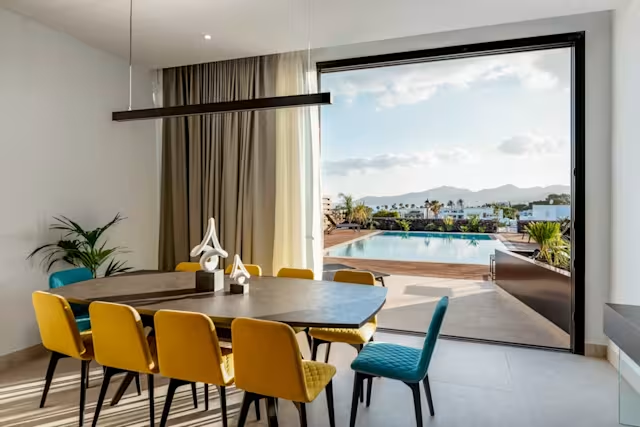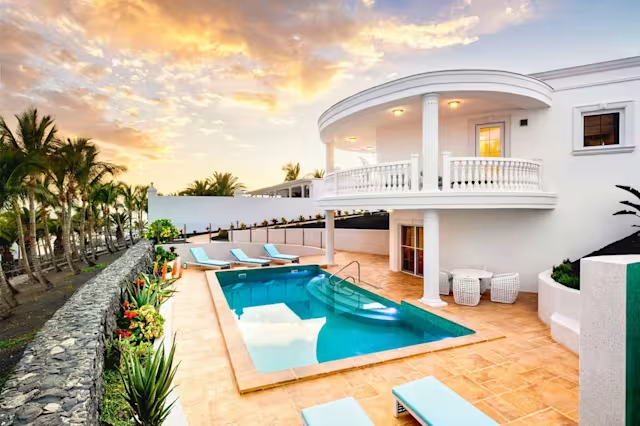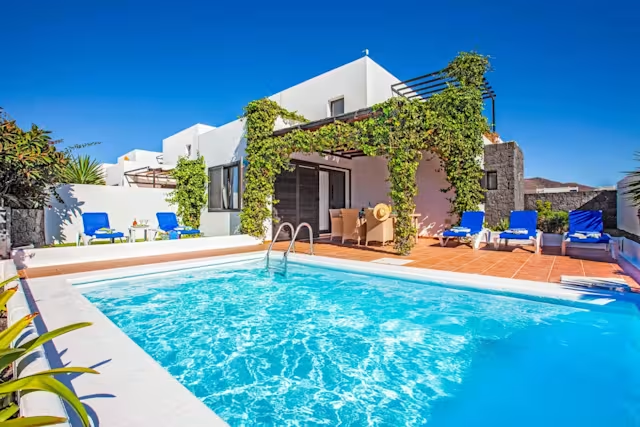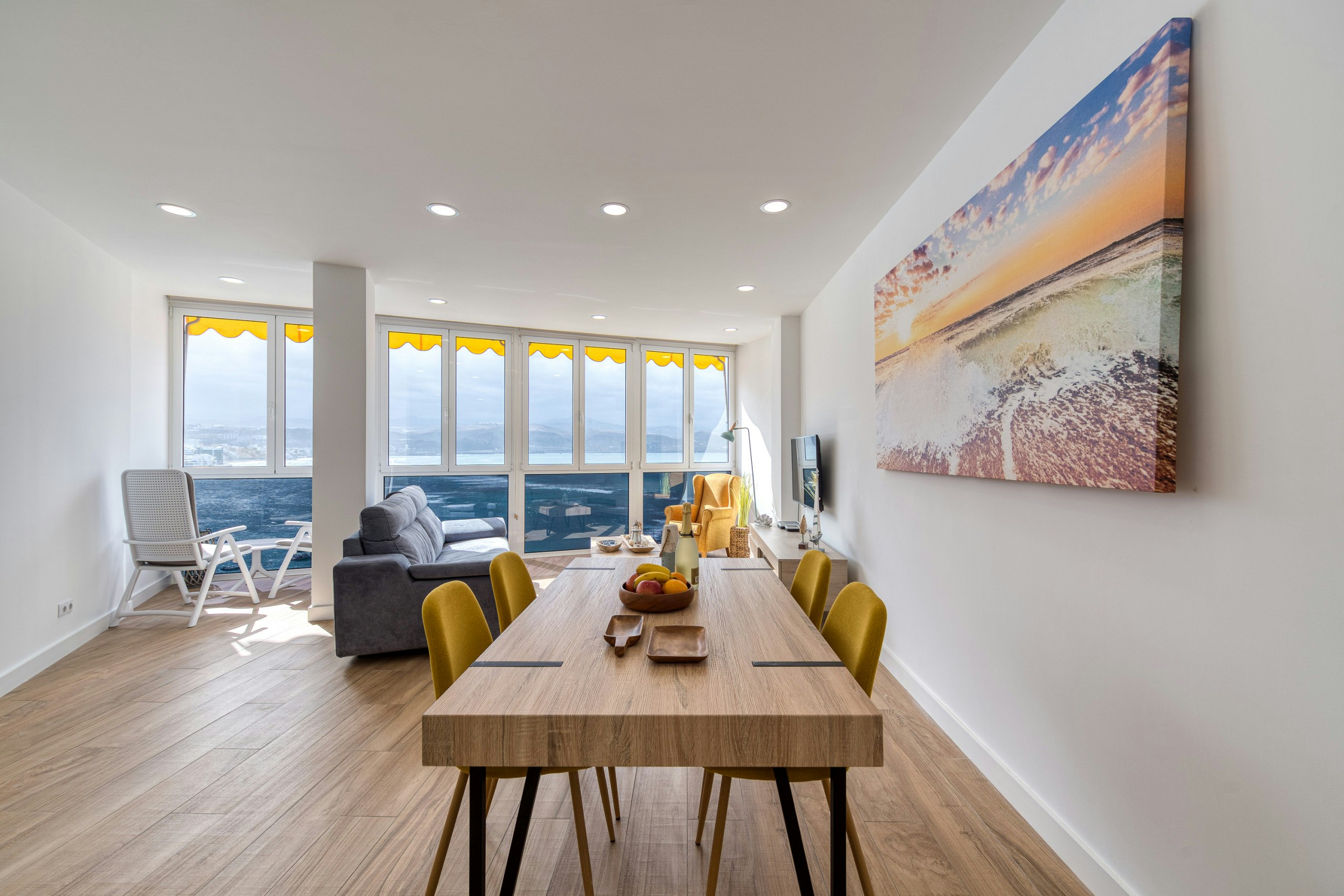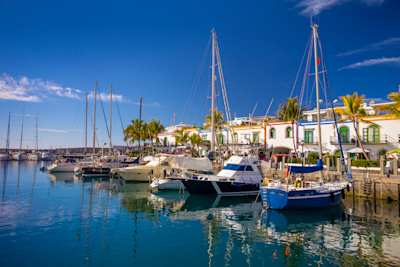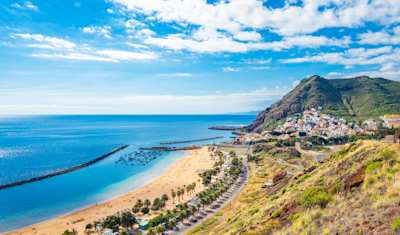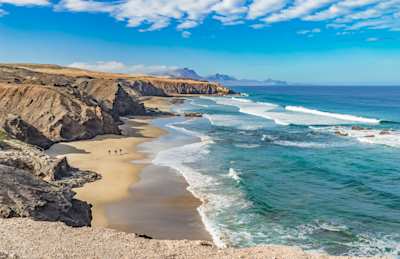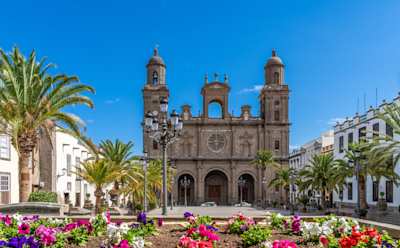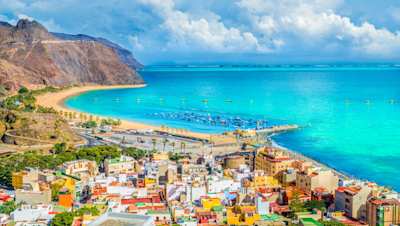Where To Stay in Lanzarote: Our 10 Favourite Spots on the Island
From bustling tourist areas to secluded villages, there’s something for every kind of traveller here
~
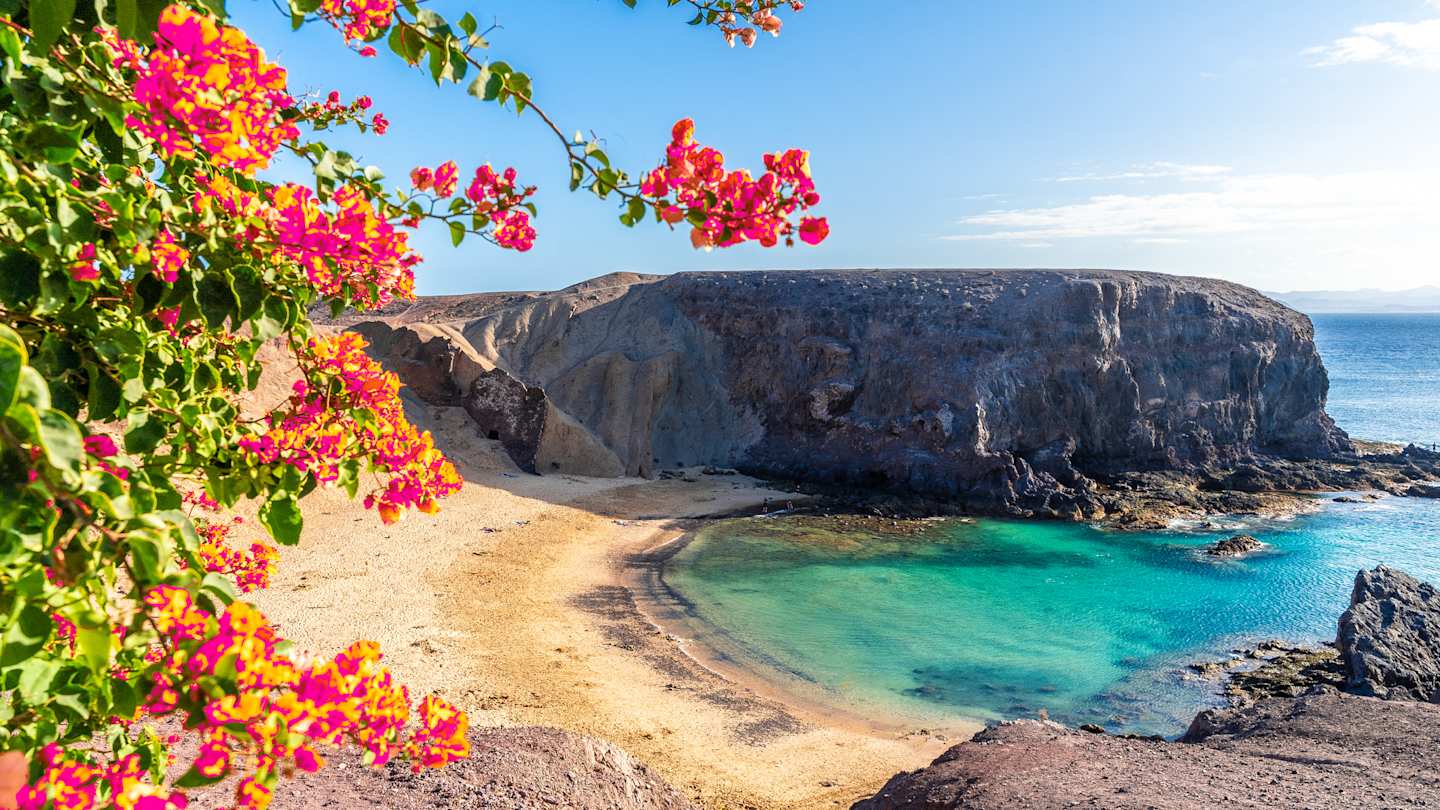
Lanzarote is full of natural beauty, from idyllic beaches to extraterrestrial-like landscapes. It’s an island of contrasts, with the green and quiet northern area strikingly different from the dry and sunny south. It comes as no surprise that it’s a popular holiday destination for people who enjoy a good mix of outdoor activities and relaxation. The island is somewhere you can windsurf in the morning, delve into history in the afternoon and party in the evening. But with so much on offer, how do you begin to decide where to stay in Lanzarote? Luckily, our travel experts at Plum Guide know the island well and are here to help you plan the perfect trip with our guide below.
Arrecife

Arrecife cityscape seen from the Atlantic Ocean, Lanzarote
The island’s capital city of Arrecife may not be the most popular spot for tourists, but anyone interested in history will love staying here. This lively port city dates back to the 15th century when it started as a sleepy fishing village. Today, its historic centre offers plenty of interesting landmarks and attractions, such as the Castillo de San Gabriel, a fortress perched on an islet built to defend the island from pirates. It now houses a museum where you can discover Lanzarote’s history.
Another notable attraction is the Iglesia de San Ginés, an attractive whitewashed church made with dark volcanic stone. Arrecife is also an excellent place for retail therapy with shops and boutiques along Calle Leon y Castillo, as well as the local market where you can pick up fresh produce.
Costa Teguise
Trouble deciding where to stay in Lanzarote for your very first visit? Costa Teguise is a great choice. Not too far from the airport and Arrecife, this resort town offers a wealth of activities and facilities. Tee off at Costa Teguise Golf, take the kids (or yourself) to Aquapark Costa Teguise, or shop for souvenirs in the arts and crafts market of Pueblo Marinero. The town’s beaches are a popular spot for windsurfing, especially Playa Las Cucharas, where you can find several windsurfing schools if you want to try it out. Not so interested in high-adrenaline sports? Check out the more relaxing beaches of Playa Bastian and Playa Jablillo, both of which are ideal for swimming. Those seeking evening entertainment will not be disappointed, with a host of bars and live music venues providing a fun night out.
Puerto del Carmen
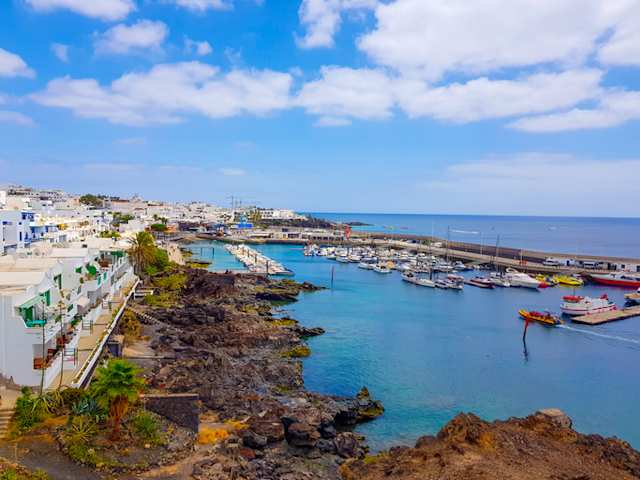
Promenade along the ocean coast in Puerto del Carmen, Lanzarote
Speaking of nightlife, Puerto del Carmen is the best place to stay if you’re looking to party. Avenida de las Playa and the surrounding Varadero offers pubs, bars and clubs for every taste, and you’ll also find lounges and beach clubs along the picturesque coastline that stretches over 6 kilometres. During the day, the beaches of Los Pocillos, Grande Beach and Matagorda are the best places to nurse a hangover. If you’re feeling up to it, try out the various activities on offer – including boat trips, windsurfing, scuba diving and deep-sea fishing. If you time your visit right, you may even catch local events such as the Carnival Parade each February or the Our Lady of Carmen Festival in the summer, which features a range of workshops, performances and competitions.
Puerto Calero
Located on the outskirts of Puerto del Carmen is the port town of Puerto Calero. Created in the 1980s as Lanzarote’s first recreational port, it’s now one of Spain’s most modern and luxurious marinas. With over 400 berths for boats, fully stocked nautical shops and boating and sailing charters, this is the best place to stay if you’re planning a sailing trip to the island. Naturally, there is plenty of high-end shopping and dining in the area, from casual, alfresco eateries to restaurants serving up fresh seafood dishes. Despite its popularity, Puerto Calero remains a peaceful and relaxing destination. Surrounded by striking volcanic landscapes, this is the best place for a mix of nature and modern life.
Famara

Red cliffs and blue skies reflected in the ocean at Famara Beach, Lanzarote
Adrenaline junkies should head to the seaside town of Famara, a peaceful spot up in the north of the island. Thanks to the swell and constant winds, Playa de Famara is a haven for watersports enthusiasts. Stretching for 6 kilometres, the wide expanse of sand is ideal for surfing, bodyboarding, windsurfing and kite surfing, and you can find plenty of watersport centres and schools offering lessons and equipment hire. Part of the Chinijo Archipelago Natural Park, the surrounding landscape is almost Mars-like with its sand dunes and red rock formations. Even if you’re not into extreme sports, the spectacular Famara cliffs, which are the remains of a caldera, provide a number of walking routes with jaw-dropping views. The cliffs are home to the highest point on the island, which is Peñas del Chache at 672 metres.
Playa Blanca
Families searching for somewhere to stay in Lanzarote should look no further than Playa Blanca. The town has a laid-back feel, with all the amenities you need. Spend time lazing on the golden sands of Playa Dorada and swimming in its crystal-clear waters, or take a quick ten-minute drive to Papagayo Beach, one of the more picturesque beaches on the island. Surrounded by a rocky landscape, this beach's emerald waters are backed by a gently curving stretch of white sand.
A stay in Playa Blanca also means you’re well-positioned for exploring some of Lanzarote’s best sights, including the lava landscape of Timanfaya National Park, the wineries in La Geria, the Janubio salt flats, the Green Lagoon El Golfo and Los Hervideros. There are also ferries running between the marina and the neighbouring island of Fuerteventura.
San Bartolomé
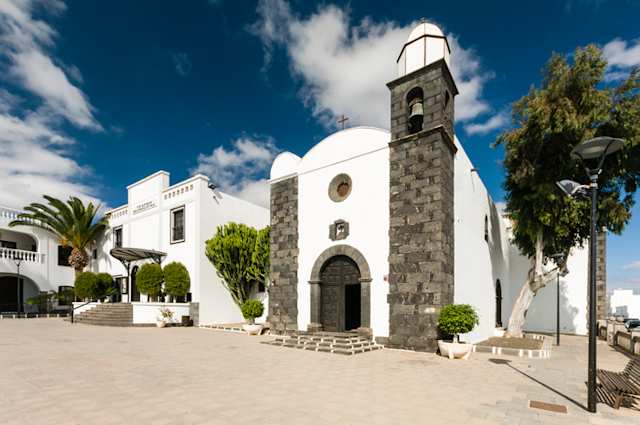
Whitewashed Iglesia de San Bartolomé church in the town square, Lanzarote
For something a little different, head away from Lanzarote’s beaches to the centre of the island. The small town of San Bartolomé is at a crossroads between the volcanic and arid south and the lush landscape of the north, making it a good base to explore the island. The town’s attractions offer a glimpse into the traditional architecture and culture of Lanzarote, from the 18th-century Iglesia de San Bartolomé with its charming bell tower, to the Casa Ajei arts centre and the Monumento al Campesino, a sculpture by Lanzarote artist César Manrique to honour the island’s agricultural workers. Thanks to its fertile volcanic soil, the town is an important centre for wine production. Oenophiles can visit the area’s vineyards for a spot of wine tasting – Bodegas El Grifo and Bodegas La Florida are some of our favourites.
Playa Honda
Just a stone’s throw away from Lanzarote’s airport, Playa Honda is a convenient place to stay, with plenty of facilities and easy access to everything the island has to offer. It’s also close to Arrecife, so you have all of the capital’s attractions on your doorstep. Playa Honda is a largely residential area, although you’ll find many restaurants and shops, such as the Deiland Shopping Center, especially along the promenade. Connecting Arrecife and Puerto del Carmen, this wide, traffic-free promenade is a great place for walking and cycling. There are two lovely beaches in town – Playa Honda near the promenade, and Guacimeta Beach, where you can experience the thrill of seeing planes coming in to land almost above your head.
Arrieta

Arrieta's well-known Blue House on the coast, Lanzarote
Those looking to avoid the big resorts will love the small fishing village of Arrieta, although its charm is quickly attracting more and more tourists. Its beautiful harbour is its main appeal, where you can watch local fishermen come in with their daily catch – naturally, this is a great spot for foodies who can enjoy fresh seafood dishes in the local restaurants. Playa La Garita is the village’s main beach, a lovely stretch of golden sand with sparkling blue waters and excellent facilities. Despite its size, Arrieta has some interesting places to visit, such as the whitewashed Church of Nuestra Señora del Carmen, and the famous Casa Juanita, also known as the Blue House. Just a short drive from the village is the Jardín de Cactus, an incredible cactus garden designed by César Manrique with over 10,000 cacti growing out of an abandoned quarry.
Orzola
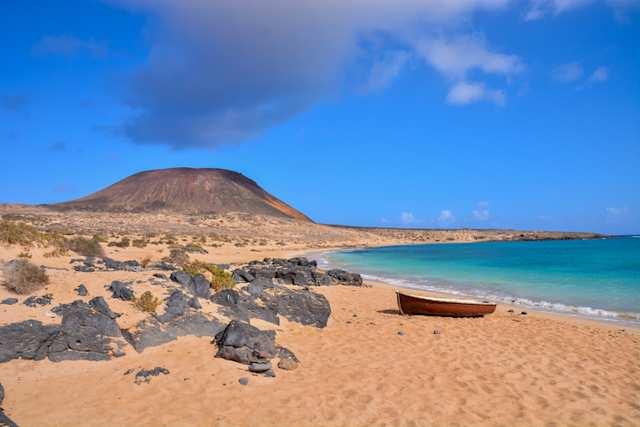
Empty rowboat in the sand of La Graciosa island, surrounded by volcanic landscape and blue waters, Lanzarote
For a getaway in nature, head north to the fishing town of Orzola. It’s known as the gateway to the neighbouring island of La Graciosa, which is part of the Chinijo Archipelago and the Chinijo Archipelago Natural Park. Barely inhabited, La Graciosa is the ultimate island escape with its white sand beaches and azure waters. There are regular ferries which take you to the island – hop on and spend the day walking or cycling around to explore the diverse flora and fauna, including seabirds, marine life and rare plant species.
Back in Orzola, there are several beaches to choose from, such as Charca de la Laja, Playa de Caleta del Mero and Playa la Canteria, which is popular with surfers. The town is also famous for its fish and seafood restaurants which you can find along its harbour.

